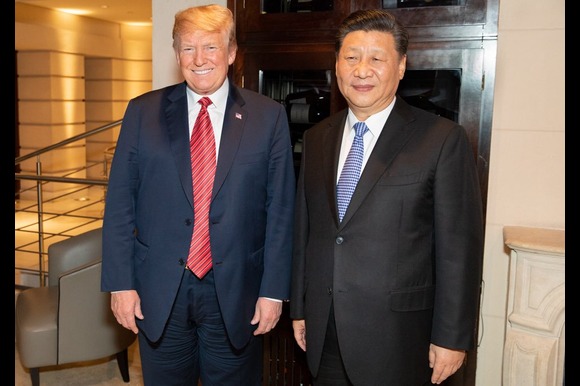
Dan Scavino
The central bank of China is increasing its cash injection through one of its policy instruments in an effort to protect the world’s second-largest economy from the effects of punitive tariffs imposed by the United States. The People’s Bank of China announced on Thursday that it will conduct a one-year medium-term lending facility amounting to 600 billion yuan ($82.3 billion) on Friday, aimed at ensuring sufficient liquidity within the banking system. This action will lead to a net cash injection of 500 billion yuan through this mechanism in April, marking the largest such injection since December 2023, as per Bloomberg’s calculations.
Wang Qing, the chief macro analyst at Golden Credit Rating, stated, ‘This operation sends a clear signal of a supportive monetary policy stance’ as the economy navigates challenges in the trade landscape. He added, ‘This measure is also intended to maintain ample liquidity conditions as the government accelerates its fundraising efforts through special government debt issuances.’ Investors have been advocating for additional policy easing from the PBOC, given the economic pressures stemming from US tariffs that can reach as high as 145 percent.
The recent liquidity injection is expected to alleviate heightened cash demand during the early May holidays while facilitating the issuance of special government bonds that commenced this week. Last month, the PBOC revised its approach to pricing the medium-term lending facility, allowing banks to bid for loans at varying rates. The central bank has ceased to disclose the cost of the one-year loans as it revamps its interest rate system to focus on short-term rates, aiming to implement a moderately accommodative monetary policy to bolster the economy.
The recent increase in cash infusion through the Medium-term Lending Facility (MLF) was unforeseen, particularly as the central bank has been minimizing the significance of this mechanism for several months, opting instead to substitute some of the maturing MLF with 3- or 6-month outright reverse repurchase agreements.
This month, 1.7 trillion yuan worth of outright reverse repurchase agreements are set to mature, marking the largest monthly maturity since the central bank introduced this liquidity instrument in October, as per Bloomberg’s calculations. The central bank is anticipated to disclose its operational plans for April regarding this tool at the end of the month. According to Ming Ming, chief economist at Citic Securities, ‘A more substantial injection via MLF could alleviate the maturity pressures of outright reverse repos this month.’
He further noted that this could diminish the necessity for a reduction in banks’ reserve requirement ratio, stating, ‘Although the policy relevance of MLF has diminished, it continues to serve as a valuable instrument for the People’s Bank of China to provide longer-term liquidity.’



